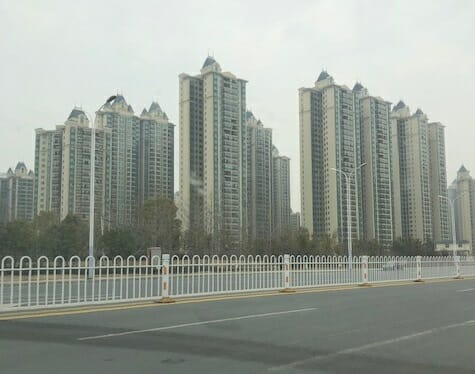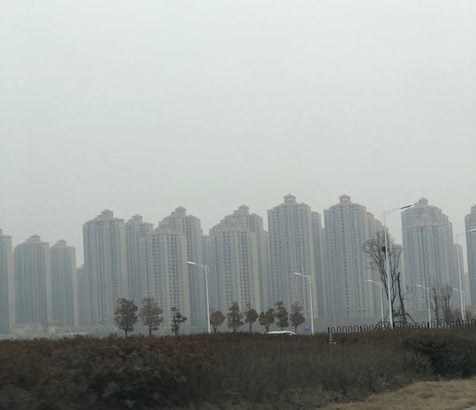Live report from Hong Kong, China

You can feel it in Hong Kong. The economy is sluggish. The question is – is the slowing Hong Kong Economy related to the protests which clearly have negatively impacted the local Hong Kong businesses or is the Hong Kong downturn related to a slowing China economy. Now we know the answer.
We’ve reported for months and again a week ago that President Trump has the US in the position that it can only win in a deal with China. President Trump’s economy is on fire – more Americans are working than every before, unemployment is at 50 year lows, wages are way up and the stock market is at record highs.
A week ago CNBC’s Jim Cramer said that the US is enjoying its greatest economy in his lifetime –
MUST WATCH:— Charlie Kirk (@charliekirk11) December 6, 2019
The mainstream media refuses to cover this fairly but @jimcramer nails it
These are the best economic numbers in the past 50 years
What an incredible way to end this decade
Unemployment—Down
Wages—Up
Stock Market—WAY up
This is the Trump economy at work! pic.twitter.com/WoJarADEbt
The US is in the position any country would want to be in when dealing with another country in trade talks. However, the Chinese regime is in a lethal position and has only two choices.
The regime can either give the US what it wants or implode.
China Needs a Deal with the US (i.e. they don’t just want it) –
As were reported in a post in August President Trump recognizes that China is in an all out war with the US in regards to information and economics. For years Western leaders have done nothing but negotiate into weak positions, never standing up to the Communist regime. Former US Presidents treated China like they did Russia 50 years ago, as their superior always giving them what they wanted and never standing up to their abuse and criminal acts.
President Trump knows that China needs the US now more than ever but the US doesn’t need China.
We posted a presentation from former Trump Chief Strategist Steve Bannon regarding China. He discussed how China is at economic war with the US. He said America was losing until President Trump. Then he added this:
Well here’s the game and right now we are converging on a point and they understand this. We could take the whole thing down. We can take, the whole thing’s built on a house of sand…If they [China] devalue their currency they are just going to flood more out. They got $3 trillion of reserves and trust me, in a New York second that thing would flood out in a second. That’s what their own people think about their economy. We’ve allowed these guys to push us around. We’ve allowed these guys to take the South China Sea…This trade war is going to end in victory and what you’re going to see is a reorientation of the entire supply chain out of China…
Bannon is right. We reported in May that just like the US in 2008, a perfect storm is building in China. The excessive and extravagant construction projects, cash-flow challenges and lack of demand in China all could combine for a major financial disaster. Trump is right – now is the time to make a deal with China.
As the movie ‘The Big Short’ revealed, in 2008 few individuals saw the US sub-prime crisis before it raised its head.
The cause of the 2008 sub-prime crisis is discussed in (my book) Falling Eagle, Rising Tigers:
Politicians would have you believe that the 2008 financial meltdown was related to the more recent actions of one party or the other, but the roots of the 2008 housing market crisis really began in the 1930s with the creation of the Federal Housing Administration (FHA), which guaranteed banks’ mortgage risks and the Federal National Mortgage Association (FNMA), which effectively insured mortgages by purchasing mortgages from lenders. Both shifted risks from the lenders to the US taxpayers. Then in 1977, the Community Reinvestment Act (CRA) was signed into law by President Jimmy Carter. This law was designed to promote home ownership for minorities by prohibiting banks from refusing mortgages in poor areas due to the loan’s high risk. In addition, mortgage lenders were required under the 1975 Home Mortgage Disclosure Act (HMDA) to provide data about who they lent to. Then in 1991, HMDA rules were tightened and included specific demands for racial equality in the institution’s lending.
Credit-worthiness was no longer relevant in the US and the volume of subprime loans exploded. The government had inserted itself in the mortgage business. Like most government initiatives, their plans were doomed. Americans lacking the ability to pay for mortgages were provided mortgages at teaser rates that when fully adjusted would never be paid. This ultimately climaxed in 2008 with the subprime crisis that sent shock waves around the world and put financial markets in a tailspin.
A financial meltdown is in the works in China
Over the past few decades, China opened its borders and corporations around the world fled to China due to its cheap capital and meager payroll costs. As a result, China’s economy exploded. Again, from Falling Eagle, Rising Tigers:
While the US is moving more and more towards a welfare state, China is moving more and more towards prosperity. “Since the launch of economic reform in 1978 more people (in China) have been made materially better off in a shorter span of time than ever before in human history.”China’s rise out of poverty has been dramatic. For example, considering a consumption threshold of $1 a day using the 1993 Power Purchasing Parities (PPP), the World Bank tracked a reduction of poverty from 652 million Chinese people in 1981 to 135 million in 2004. China’s anti-poverty performance is even remarkable with a standard of $1.25 a day at 2005 PPP. “The numbers in poverty by this measure dropped from 848 million in 1981 to 351 million in 2004. This denotes that there were 517 ($1 standard) or 497 million ($1.25 standard) people who had escaped from absolute poverty during 1981-2004.” A half a billion Chinese citizens have risen out of poverty due to China’s changing policies!
The Chinese were relentless in their efforts to obtain Western technology and grow their economy. They set up trade barriers and manipulated their currency in ways that helped China. The US was at a disadvantage in trade resulting in massive deficits in the billions.
Along comes the Trump Administration, the first administration to address China’s unfair trade advantage. The timing of Trump’s tariffs is not good for China as there are more pressing issues that must be addressed. President Trump is a shrewd negotiator and he obviously believes now is the time to encourage China to make changes to their trade barriers with the US. China may have no choice but to go with what the US offers to keep its economy afloat.
The more pressing issues for China surround real estate, in a manner similar to the US in 2008. As China grew, it invested in its infrastructure and in addition, it invested in large housing projects throughout the country. These efforts helped bolster China’s already fast growing economy.
The problem is that China over invested in these random properties all over China and these properties today remain empty.
(See below pictures of real estate projects the middle of China (Hubei Province) – massive but mostly empty.)



There simply are not enough people in the area where these massive complexes were built that make enough money to afford living in these communities. It appears that the Chinese communists misunderstanding of supply and demand economics may be their downfall.
Some say, no problem, China will just move all the peasants to these massive complexes. This will be devastating. First of all China needs to feed them. Secondly, as we have learned in the US, people on the dole with no work tend to get involved in drugs and crime. The human spirit needs a purpose – idle hands are the devil’s workshop!
These many properties throughout China sit unoccupied, and there is a cost to this. Bloomberg reported in September 2018 –
Cash-to-short-term debt levels at more than 80 publicly traded real estate companies tracked by Bloomberg were 133 percent on average in the first half, the worst since the first six months of 2015 and down from 297 percent a year earlier. Almost a quarter of developers sport a ratio below 50 percent.
In addition, Bloomberg noted:
But while business has been booming, developers have also been piling on the debt. Firms have been selling more bonds in the domestic market — and at the cheapest rates as investors shrug off default concerns. Those with dollar-denominated obligations, meanwhile, face higher borrowing costs as the U.S. Federal Reserves continues on its tightening path.
The amount of debt related to China’s over development is massive. The total amount is unknown with S&P estimating the amount not reported by local communities and banks being over $6 trillion:
China may be sitting on a hidden debt pile of as much as 40 trillion yuan ($6 trillion), concealed off-balance-sheet by the country’s local governments, according to research from S&P Global Ratings.Many local governments in China raise debt and hold it off their balance sheet, in order to avoid lending limits imposed by central authorities. S&P says that this is a growing problem within the country, and that the amount of debt held this way has likely ballooned in recent years.
The government may have to take over these debts as they become insolvent –
Not only is the level of hidden debt held by local governments in the world’s second largest economy rising, but so too is the risk of those debts being defaulted on. Much of the debt is held by so-called local government financing vehicles (LGFVs), and S&P reports that central government may be willing to let these vehicles file for bankruptcy in the future.“Default risk of LGFVs is on the rise. China has opened up the possibility of insolvent LGFVs filing for bankruptcy, but managing the default aftermath is a formidable task for top leadership,” the report noted….The country’s total non-financial sector debt, which includes household, corporate and government debt, will surge to almost 300% of GDP by 2022, up from 242% in 2016. Fears abound that if this debt pile continues to grow, a spectacular blow up could be imminent.
China’s financial crash may make the 2008 crash in the US look small. The implications will no doubt impact the entire world. This is why China can’t afford to mess around with President Trump and must put together a treaty as soon as possible. (Per the video above from Jim Cramer, China will have to move jobs to the US in any deal with the US.)
Now we know that we were right! China’s economy is growing at a rate less than that of the US now.
Analyst Gordan Chang was on Lou Dobbs Tonight. After sharing that China is suffering under near 20% inflation in some areas, Chang shared the following (at the 32:20 mark) –
When you look at the underlying indicators for October, it shows an economy going down. We don’t know where the Chinese economy is and probably the Chinese don’t either. It could be negative (2%), it could be 1% growth. It is less than ours.
As China falls the US economy is the one the world runs to and so the impact to the US will be a massive inflow of money resulting in rising markets due to capital infusions.



Post a Comment